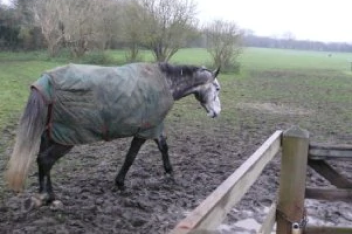The British Psychological Society (BPS) has recently reported on a new study showcased at the society’s annual conference that shows that many children are unaware that they should show caution around frightened dogs.
Lead researcher Dr Sarah Rose of Staffordshire University said: “This study explored whether children are unable to accurately recognise a dog’s emotions, when approaching one.”
Dr Rose and Grace Alridge (also of Staffordshire University) asked two groups of children aged 4 to 5 (57) and 6 to 7 years old (61) to watch 15 videos and look at 15 images showing real life behaviour of dogs. Video clips were all between 6 and 11 seconds long and the only auditory information was the dog barking.
Both groups of children were asked questions relating to their intention to approach the dog, and what emotion they thought the dog was experiencing. Analysis of the results showed that the children recognised happy, angry and frightened dogs in the videos; however, although the children were less likely to approach an angry dog, there was no difference in their inclination to approach a happy or frightened dog.
Dr Rose said: “Young children are relatively good at accurately identifying the emotion that a dog is displaying. However, children’s understanding of safety around dogs is lacking as they only demonstrated caution about approaching angry dogs. They appeared to be unaware that there might be problems approaching frightened dogs. This finding should help inform dog bite prevention campaigns.”
Signs of fear in dogs typically include: Pacing, Panting, Attempting to hide, Lack of appetite, Being too distracted for a human to get their attention, Salivation, Yawning, Restlessness and in extreme cases, Incontinence.
There could be many causes of the fear - e.g. lack of socialisation with dogs or humans, separation anxiety or frightening noises - and best advice is to seek the advice of your vet, or a local canine behaviourist. (Contact the Association of Pet Dog Trainers). You may find that using a dog-appeasing pheromone diffuser helps to calm an anxious dog, and of course you should always make sure the animal’s needs have been met, e.g. ensure they have been fed, exercised and allowed to go to the toilet.
In light of the latest research however, a key factor for us all to bear in mind is to educate our children and any children that come into contact with our dogs that frightened or angry dogs must not be approached under any circumstances. Frightened dogs should especially not be comforted by a child. As Dr Sarah Rose of Staffordshire University reported at the conference, young children in the UK are at the highest risk of being bitten by a dog, with nearly 1200 admissions to hospital for under 10’s during 2013-2014.
A range of canine and equine supplements including Glucosamine for Dogs are available from Scientific Nutritional Products at www.horsesupplementsdirect.co.uk For more information or to receive one-to-one nutrition advice specific to your dog contact our nutritional specialist Peter Fishpool on FREEPHONE 0800 032 7774 or Tel: 01377 254900




